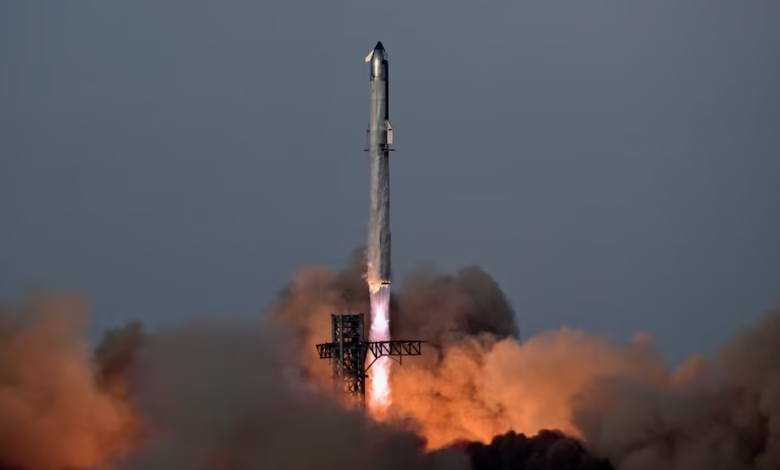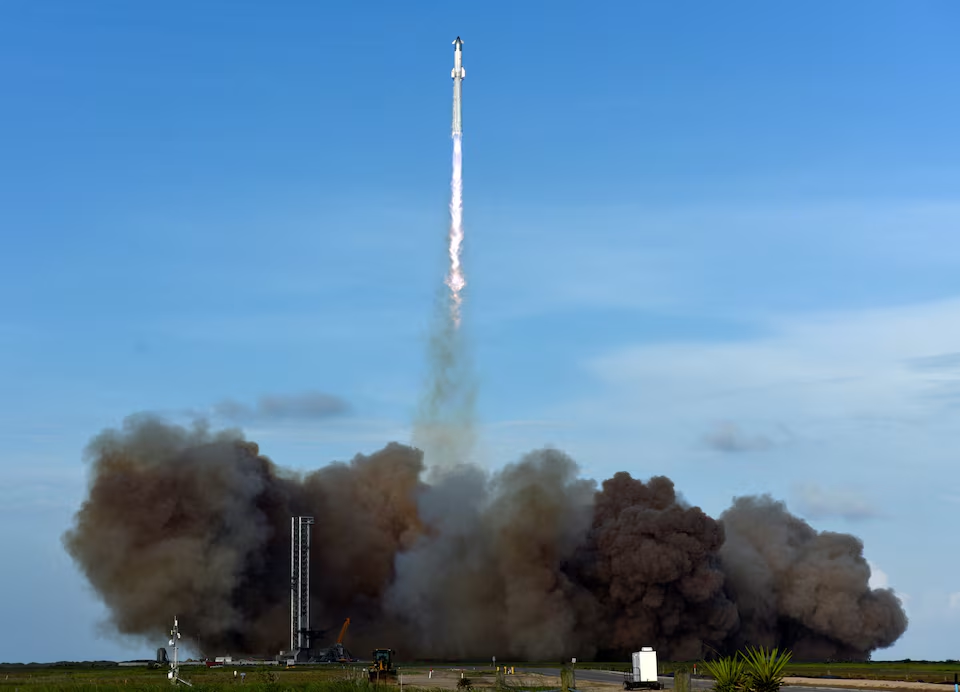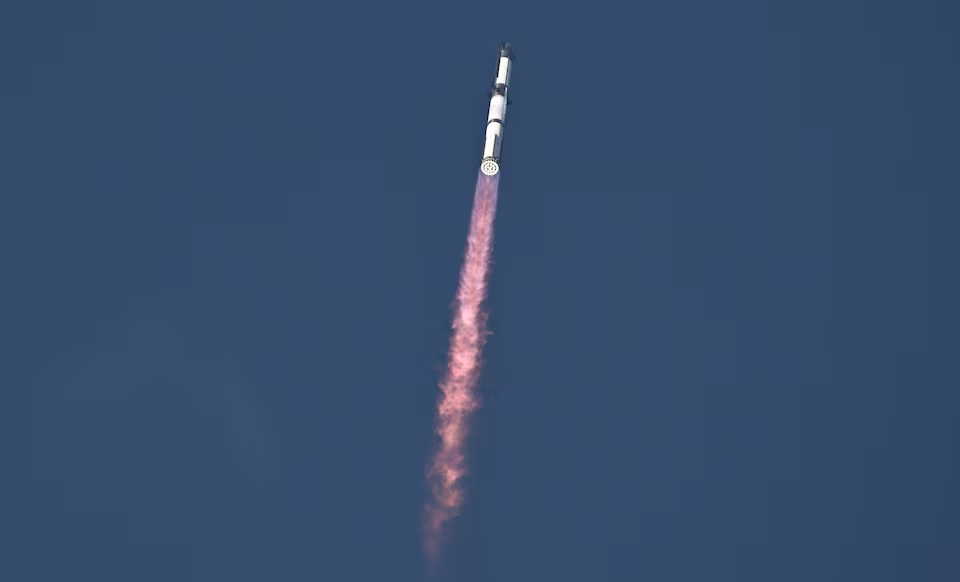SpaceX’s Starship Achieves Milestone with Mock Satellite Deployment

Starship’s Tenth Flight Marks Progress After Testing Setbacks
SpaceX’s Starship rocket achieved a critical milestone on Tuesday by deploying its first batch of mock Starlink satellites and testing new heat shield tiles during atmospheric reentry. The achievement follows a series of failed test flights and strengthens SpaceX’s development program for its next-generation launch system.
The 403-foot-tall Starship system, conducting its tenth test flight, launched at 7:30 p.m. EDT (2330 GMT) from SpaceX’s Starbase facility in Texas. Three minutes after liftoff, the Super Heavy booster released the Starship upper stage into space, setting the stage for the mission’s key demonstrations.

First Satellite Deployment Demonstration
Roughly 30 minutes into the flight, Starship used its “Pez” dispenser system to deploy eight dummy Starlink satellites. This test marked the first demonstration of the satellite deployment method for a vehicle that SpaceX intends to use for its commercial launch business.
The success of this system is central to SpaceX’s long-term strategy. The company plans to eventually launch larger batches of operational Starlink satellites aboard Starship, replacing the smaller payload capacity of the Falcon 9 rocket currently in use.
Heat Shield Evaluation
An hour into the mission, Starship endured a high-speed reentry over the Indian Ocean. The test evaluated newly designed hexagonal heat shield tiles intended to withstand the intense friction of atmospheric reentry without requiring significant refurbishment.
Historically, spacecraft have needed new heat shields or major repairs after each mission. NASA’s retired Space Shuttle tiles lasted through multiple flights, though replacements were often necessary. SpaceX CEO Elon Musk noted, “There are thousands of engineering challenges that remain, for both the ship and the booster, but maybe the single biggest one is the reusable orbital heat shield.”

Controlled Landing and Termination
The mission concluded with a controlled engine-guided landing on the ocean’s surface west of Australia. Moments later, the 171-foot-tall Starship toppled and exploded, an anticipated outcome triggered by its flight termination system.
This outcome is consistent with SpaceX’s “test-to-failure” development approach, which has involved three prior failures occurring earlier in flight or during ground tests. Tuesday’s test advanced further, demonstrating critical systems before termination.
NASA and Artemis Program Links
NASA has contracted Starship for its Artemis III mission, which aims to return astronauts to the lunar surface in 2027. Acting NASA Administrator Sean Duffy congratulated SpaceX, stating, “Flight 10’s success paves the way for the Starship Human Landing System that will bring American astronauts back to the Moon on Artemis III.”
While the target date remains 2027, space analysts anticipate possible delays. Additional demonstrations, including in-space refueling and lunar surface landings, remain on the development roadmap before Starship can carry humans to the Moon or beyond.
Commercial and Strategic Importance
SpaceX projects $15.5 billion in revenue this year, with Starlink providing a significant portion. Starship’s ability to carry larger payloads is key to scaling the satellite network, which currently depends on Falcon 9 launches.
The Super Heavy booster for Tuesday’s flight landed in the Gulf of Mexico, testing an alternate engine configuration. In regular operations, the booster is designed to return to a launch tower equipped with catch arms.
The Starbase facility, central to Starship development, has rapidly expanded into a municipality established earlier this year by local voters, many of whom are SpaceX employees.
Outlook
Despite notable progress, SpaceX faces a demanding checklist before Starship can begin routine missions. The company must prove reliable in-space refueling, safe lunar landings, and repeated reusability of the heat shield system.
With NASA partnerships and commercial goals tied to Starship’s success, the outcome of each test flight carries significant weight for the future of human space exploration and satellite deployment.
Read More: LAD REPORTING




